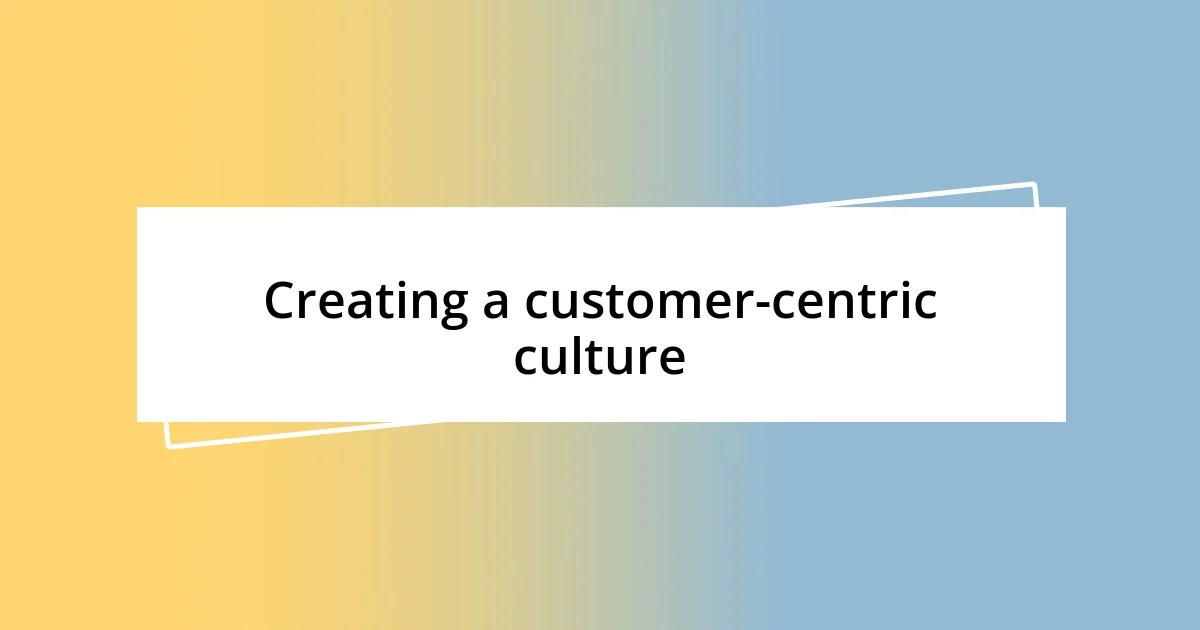Key takeaways:
- Overcoming challenges in tech startups involves embracing setbacks as learning opportunities and fostering strong team dynamics through open communication.
- Success strategies include prioritizing customer feedback, adapting quickly to market changes, and celebrating both successes and failures to build a resilient team culture.
- Leveraging technology effectively and continuously measuring performance with KPIs are crucial for aligning strategies with customer needs and market trends.

Understanding tech startup challenges
Navigating the turbulent waters of a tech startup can feel like sailing through a storm without a compass. I remember the early days when our team faced endless hurdles—be it funding issues or technical glitches—and I often wondered if we’d even make it to the next milestone. It’s important to recognize that setbacks are almost a rite of passage; they’re not just challenges, but also valuable lessons that shape our resilience.
Moreover, the market is perpetually shifting. With new trends emerging every day, staying relevant feels like a never-ending race. At one point, I realized that our initial concept was rapidly becoming obsolete. This realization was painful, yet it sparked a transformative pivot in our strategy. I often ask myself: how can we truly innovate if we don’t embrace change? The answer, I find, lies in developing a mindset that welcomes adaptability.
Finally, team dynamics often present their own unique set of challenges. I’ve seen firsthand how miscommunication can derail a project, leading to frustration and missed deadlines. Reflecting on my experience, I’ve found that fostering open communication and trust among team members is crucial. How else can we ensure that everyone is on the same page, working toward a common goal? Ultimately, I believe overcoming these challenges is not only about strategy but also about building strong relationships.

Key strategies for success
Key strategies for success in tech startups require a balanced mix of innovation and practicality. One key strategy I’ve learned is to prioritize customer feedback. Early in my first venture, we launched a product that we were incredibly proud of, but the response was lukewarm. That experience taught me the value of listening to users; adjusting our services based on real customer experiences can dramatically enhance product-market fit.
Here are some strategies that I believe are essential for success:
- Embrace Agility: Adapt quickly to market changes and iteratively improve your product based on feedback.
- Build a Strong Network: Surround yourself with mentors, advisors, and peers who can provide insights and support.
- Set Clear Goals: Define SMART goals—Specific, Measurable, Achievable, Relevant, Time-bound—to guide your team’s efforts.
- Focus on a Minimal Viable Product (MVP): Launching with a basic version of your product helps you gauge interest without overcommitting resources.
- Foster a Positive Culture: Encourage a team environment that celebrates failures and learns from them. I’ve noticed that when my team feels safe to take risks, creativity flourishes.

Building a strong team
Building a strong team is undoubtedly one of the most important aspects of a tech startup. I’ve been through the motions of assembling a team that not only has the right skills but also shares a common vision. It’s like putting together a puzzle; each piece must fit well to create a beautiful picture. A diverse team can provide a broader range of ideas, but it also requires strong leadership to harmonize those differing perspectives. I learned this the hard way during a project where differing opinions led to misunderstandings, slowing our progress significantly.
When I look back at my experiences, open communication stands out as a cornerstone of team building. I recall a particularly challenging project where one member felt overwhelmed but didn’t voice their concerns out of fear. This resulted in errors that could have easily been avoided through a simple, candid conversation. I make it a habit to hold regular check-ins, encouraging team members to share challenges and successes alike. It’s vital to foster an atmosphere where everyone feels valued and understood.
Ultimately, I believe in celebrating both wins and failures with the team. For instance, after launching a product that wasn’t well-received, we held a retrospective meeting instead of focusing on the shortcomings. We discussed what we learned and how we could apply those lessons moving forward. This not only boosted morale but also strengthened our bond. A resilient team is made of individuals who feel safe expressing vulnerabilities and sharing insights, and that’s how I’ve managed to harness the collective strength of my teams effectively.
| Aspect | Importance |
|---|---|
| Diversity | Brings various perspectives and skills |
| Communication | Prevents misunderstandings and promotes collaboration |
| Celebration of Successes & Failures | Fosters a positive culture, encourages risk-taking |

Leveraging technology effectively
Leveraging technology effectively is about making smart choices that align with your startup’s goals. I can’t stress enough how utilizing the right tools can streamline processes. For instance, during one project, we implemented project management software, which transformed our workflow. Suddenly, everyone was on the same page, making it easier to track progress and deadlines.
I’ve also found that automating repetitive tasks is a game-changer. When we first integrated automated reporting, it freed up hours of my time each week. I could then focus on strategic planning rather than getting bogged down in data collection. Have you ever had one of those moments where you realize a tool saves you more than just time—it saves mental energy too?
Moreover, investing in data analytics tools can provide valuable insights into customer behavior. For instance, in a past venture, I analyzed user interactions on our platform. The data revealed features that users loved but also spotlighted areas of confusion. Armed with this information, we made targeted improvements that boosted user satisfaction. It’s fascinating how technology can turn raw data into actionable strategies, enhancing both your product and your user experience.

Creating a customer-centric culture
Creating a customer-centric culture is all about truly understanding your customers’ needs and pain points. When I first started in the tech startup world, I remember attending a user feedback session that completely changed my perspective. Listening to customers share their frustrations not only humbled me but also ignited a passion within my team to prioritize their voices. It was remarkably eye-opening to hear firsthand how our product impacted their daily lives, pushing us to innovate and adapt in ways we hadn’t considered before.
Another approach that worked beautifully in fostering a customer-centric culture involved integrating customer insights into our decision-making processes. For example, after we received feedback about a confusing feature, we immediately convened a brainstorming session to address the issue. I’ll never forget the energy in the room when team members proposed creative solutions, driven solely by the desire to enhance the user experience. It felt as though we were all on a mission together, fueled by the understanding that our success hinged on the satisfaction of our users. Have you ever felt that rush of teamwork when everyone aligns toward a common goal? That’s the magic of putting your customers at the forefront.
Moreover, I learned that celebrating customer stories can truly bring your team closer to your audience. During one product launch, we invited some of our more passionate users to share their experiences with us. Hearing their enthusiasm and how our product had made a real difference in their lives was genuinely inspiring. It reminded us why we do what we do and reinforced the importance of keeping our customers’ needs at the heart of our mission. I often ask myself, “What would our customers think about this?” as it helps keep our focus where it belongs—on them.

Measuring and analyzing performance
Measuring and analyzing performance is a critical aspect of driving my tech startup forward. I remember the adrenaline rush I felt the first time I set up a performance dashboard for our web platform. It was exciting to see real-time data reflecting user engagement and conversion rates. But that initial thrill evolved into a deeper understanding of the numbers. I learned that it’s not just about gathering data; it’s about interpreting metrics meaningfully. Have you ever dissected a figure only to discover what truly drives your business forward? That’s when the numbers become more than just statistics—they evolve into a conversation about your company’s health.
Using key performance indicators (KPIs) has also been essential. At one point, we focused on customer acquisition costs, and it was a real eye-opener. Analyzing our marketing spend against the revenue generated helped us pivot our strategies more effectively. I can still recall the surge of excitement when we identified a more cost-effective channel that doubled our return on investment. Doesn’t it feel amazing when strategic tweaks yield such impactful results? Every KPI tells a story, revealing strengths and weaknesses that can guide us in making informed decisions.
I’ve come to appreciate that consistent performance reviews are vital for team alignment. In my experience, quarterly reviews turned into invaluable brainstorming sessions. It was during one such meeting that a teammate proposed a shift in our user onboarding process based on user feedback and our performance data. The discussion was electric, filled with ideas bridging data analysis and creativity. Have you ever been in a room where the energy is palpable because everyone is so invested in improvement? For me, these moments reinforce that data is more than numbers—it’s a catalyst for innovation and teamwork.

Adapting to changing market trends
Adapting to changing market trends feels like riding a wave—you need to maintain balance and agility to stay afloat. I vividly recall a moment when a sudden shift in consumer behavior caught my team off guard. We had invested heavily in a particular feature, but after observing declining engagement rates, we quickly gathered around to re-evaluate our strategy. That urgency and collaborative spirit ignited a pivotal transformation within our product, reminding me how essential it is to remain flexible in an ever-evolving landscape.
Another experience that stands out is when we noticed a competitor releasing a similar product with a fresh twist. Overnight, we found ourselves in a creative sprint, brainstorming ways to differentiate our offerings. I remember the palpable tension in the room as we pushed each other to think outside the box. Each pitch sparked a wave of creativity that not only rejuvenated our product but also solidified our teamwork in tackling external challenges. Have you ever felt that creative fire when faced with competition? It’s exhilarating and a critical reminder that staying relevant often requires diving headfirst into innovation.
Moreover, I learned the importance of continually scanning the horizon for emerging trends. During one quarterly meeting, we dissected industry reports and consumer feedback to identify patterns that could shape our roadmap. The way the conversation evolved into brainstorming potential product enhancements was truly inspiring. It made me appreciate how adaptation isn’t just a reaction—it’s a proactive approach to ensuring our solutions align with shifting market expectations. I often reflect on the question: how can we anticipate the next change before it happens? That mindset has become a guiding principle in navigating the dynamic world of tech startups.












